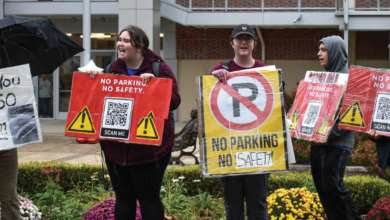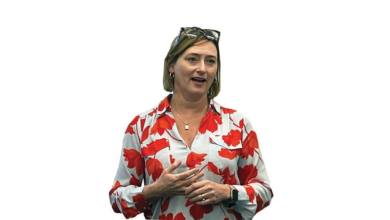
Students express frustrations with COVID testing criteria
By Sarah Siock and Shaun Chornobroff
As students at Rider continue to navigate their way through the COVID-19 pandemic, the community has opened up about its concerns stemming from the strict standards required to secure a test from the university’s Student Health Center.
Testing confusion
The university has administered 351 tests through the Student Health Center as of Nov. 12, according to the university COVID-19 dashboard, with a semester high of 80 tests being conducted in the dashboard’s most recent update.
However, not only are faculty unable to test through the health center, but students are only able to test if they are close contacts or symptomatic, multiple faculty members and university administrators have confirmed to The Rider News. Rider’s Resolved and Ready plan defines a close contact as someone who was within 6 feet of someone with COVID-19 for a total of 15 minutes or more over a 24-hour period, with or without a mask.
Students expressed frustrations with the university not offering universal testing and said the close contact criteria are not clear.
Angela Rizzo, a junior elementary education major, was immediately concerned when she was informed on Nov. 2 that one of her professors tested positive for COVID-19. In an email with the subject line of “COVID Testing Needed ASAP”
Rizzo explained to the health center that she does field work at an elementary school where she teaches unvaccinated children and wanted a test as soon as possible from the university to ensure that she was keeping them safe before going into her class the next week.
To her dismay, she was told that she was not a close contact and offered no form of assistance in receiving a test.
“It was extremely frustrating for me because last year, my roommates, we all had to quarantine because of coronavirus, and through that, we got a test right away,” Rizzo said. “But the fact that they wouldn’t give me a test, especially since I explained my situation, said that I go into school with unvaccinated kids, and I want to make sure that I’m negative, it was extremely frustrating.”
Juliet Inforzato, a senior psychology major, is immunocompromised and all three of her suitemates have worried about exposure to the virus at different points in the fall semester. Inforzato admitted that she has had a heightened sense of concern this year and feels unsafe with the school not providing tests for all students.
“I don’t think that’s okay because I don’t think you have to be a close contact [to be exposed]. … We know that not everybody wears their mask correctly and some of my teachers don’t even wear a mask when they talk,” Inforzato said. “I think that if you were exposed in any way you should be able to get a test.”
‘Focusing on what’s most important’
Despite the confusion and concern stirring among students, Debbie Stasolla, vice president for strategic initiatives and planning and secretary to the board said the health center is following Center for Disease Control and Prevention guidelines, which only call for symptomatic students and their close contacts to be tested five to seven days after exposure. Additionally, unvaccinated students and employees are required to be tested weekly to attend in-person classes.
Stasolla said the volume would be too great if all students could be tested when they pleased since the health center still has the responsibility of caring for other student health needs on campus.
Stasolla said, “We wouldn’t be able to keep focusing our attention on what’s most important, which are symptomatic students, and students who through our training process have been identified as close contacts and really do need to be tested. We would probably spend a lot of our time just doing testing, which would be to the detriment of those other important and really primary responsibilities.”
Stasolla encouraged students who do not meet the health centers’ standards of testing to find testing options off-campus.
Stasolla said, “The circumstances are different now. There are plenty of pharmacies in the area or close to home where anyone could get tested.”
Professors’ concerns
Professors also voiced uncertainty over Rider’s contact tracing protocols as cases have begun to pop up in their classes. Stasolla said professors are not explicitly told if a student in their class tests positive for COVID-19. Instead, professors are emailed a “class absence notice” informing them health reasons are preventing a student from attending their class. Stasolla said this process was created to be “as confidential as possible.”
However, there are exceptions to this rule. If the professor was identified as a close contact, then they would be notified of the COVID-19 case in their class.
Professors are also informed in some situations to help with contact tracing. For example, if a student cannot identify their close contacts in the classroom, Stasolla said a professor would then be informed of who the student is, whether their test resulted in a positive and asked to tell who sits near them.
Nancy Wiencek, chair of the department of communication, journalism and media recently had students in one of her classes test positive for COVID-19 and she said certain parts of the communication process left her with questions.
On Nov. 9, Wiencek was informed via email that a student in her class tested positive for COVID-19 and was asked to provide a list of students who sat near the infected individual. On Nov. 10, Wiencek received a “class absence notice” from Rider’s COVID-19 case manager Chris Botti. The message did not say the student had COVID-19, but it was one of the student’s Wiencek previously identified as a close contact. This time Wiencek was not asked to help with contact tracing.
Wiencek said, “I was concerned about the first student because I’m concerned about the health and safety of all the students … When I received the second notice, I was really concerned because I didn’t know what to do. Now there are two students in class and these were two students who actually sat near each other.”
Wiencek quickly booked an appointment for a COVID-19 test at a local pharmacy for herself and later tested negative. However, she was left with unanswered questions, such as if there would be a certain point when she needed to move her class to Zoom. Stallosa said determining if a class should move to Zoom is dealt with on a case-by-case basis.
Wiencek said, “We’re all just a little bit on edge. If I have two cases in my class, just referring me back to the website isn’t enough. We want to keep everybody safe. You have to also keep in mind that as faculty members and staff we go home. We’re not in a little bubble here. There’s many of the faculty who have little kids at home.” Wiencek’s experience isn’t unique.
Dr. Jay Stern, a professor of film and television, tested positive for COVID-19 himself earlier in November, and even before that, had multiple positive cases within his classes.
“I had a student who was positive, like my first day of teaching this semester that was in our class and was close [to me]. I wasn’t told to test or anything for that, and that was distressing because we’re just coming back now, and how’s this going to play out?” Stern said.
When Stern tested positive he notified his students as soon as he tested positive for the virus and moved his classes to Zoom. Stern had one “health compromised” student reach out to him about testing for what he assumed to be “their own peace of mind” during the semester.
Stern said, “I can’t speak for everybody obviously, but the idea is, we want to be hypervigilant about this, and we want to make sure we can be routinely tested because in my case I was highly symptomatic. I just felt awful. … So sure, I think testing should be available.”


